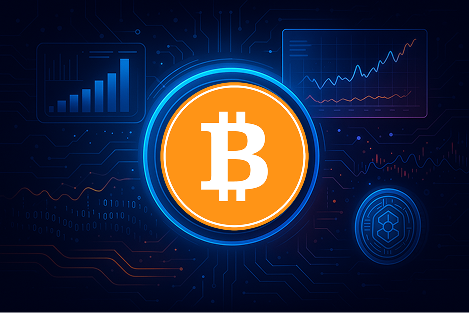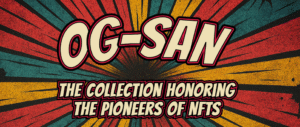Deep AI (DEEP): Analysis, Functionality, and Investment Guide

Deep AI (DEEP) is a native token designed to bridge blockchain and artificial intelligence within a decentralized ecosystem. With no presale, no VC backing, and no centralized control, DEEP offers an innovative alternative focused on utility, transparency, and community engagement. In this comprehensive analysis, discover DEEP’s fundamentals, use cases, technological evolution, and the best ways to buy or invest in this Web3 AI-driven token.
Introduction: Deep AI, A Crypto at the Intersection of AI and Web3
In a crypto landscape saturated with purely speculative projects, Deep AI stands out with a clear ambition: democratize access to artificial intelligence through an open and community-driven blockchain architecture. Designed as a lever for decentralized innovation, DEEP aims to make AI accessible to all via integrated tools, open-source models, and user-led governance. The DEEP token is more than just a digital asset. It powers an ecosystem focused on interaction, contribution, and reward. Without any initial fundraising or hierarchical structure, Deep AI aligns with Web3 values: inclusion, transparency, and resilience. This approach appeals to developers, researchers, and investors seeking a project with real utility and alignment with the most promising technological trends.Key takeaways
- What Deep AI is, its mission, and technical foundations;
- How the DEEP token and its smart contract function;
- Key milestones in its launch and recent evolution;
- Real use cases related to decentralized artificial intelligence;
- Forecast scenarios and strategies for sustainable investment.
Presentation of Deep AI: A Utility Crypto Dedicated to Decentralized AI
Deep AI (DEEP) is a utility token born from a project focused on integrating artificial intelligence within an open, decentralized, and accessible blockchain framework. Created with no presale or institutional funding, Deep AI follows a community-centric logic geared toward research, open source, and the democratization of AI. It targets developers and tech enthusiasts alike, aiming to build an ecosystem around collaborative, transparent, and scalable AI tools. The Deep AI project is based on three main pillars: an immutable smart contract with no privileged access, fair token distribution, and a strong technological focus on delivering decentralized AI tools. Unlike other AI projects that centralize access to models or resources, Deep AI promotes openness: every contribution is valued, every interaction is transparent, and every user has a say in the project’s evolution. With no identified executive team and a flat community governance model, the project’s independence is further reinforced. DEEP is built on an EVM-compatible architecture, ensuring security, interoperability, and long-term scalability. This tech foundation enables the organic expansion of the network as the community develops new concrete use cases. The DEEP token circulates on ERC-20 compatible DEXs and is used to fund, incentivize, and structure ecosystem interactions: paying for AI tools, contributing to open-source projects, or rewarding community engagement. Far from being a mere speculative asset, DEEP serves as a functional lever to activate an economy based on free and collaborative AI. Thanks to this utility- and transparency-oriented approach, Deep AI attracts a new generation of Web3 users: researchers, engineers, open-source contributors, and investors eager to support a tech vision grounded in decentralization.Technical Architecture of Deep AI: A Decentralized Infrastructure for open AI
Deep AI is built upon a lightweight yet robust blockchain architecture, emphasizing transparency, utility, and open access to artificial intelligence. Departing from traditional centralized AI projects that often restrict access to models and data, Deep AI employs a simplified, immutable smart contract deployed on an EVM-compatible blockchain. This design ensures fairness, trust, and technological neutrality from the outset. At its core lies a smart contract devoid of additional minting capabilities, administrative privileges, or pause functions.This structure guarantees that the DEEP token is issued transparently and irreversibly, eliminating possibilities for future intervention. Such an approach minimizes manipulation risks and fosters enduring trust among contributors, users, and developers within the ecosystem. A notable feature is the integration of native economic incentive mechanisms. The DEEP token facilitates access to open-source AI models, rewards contributors through micropayment systems, and supports community-driven data labeling and training campaigns. Additionally, a partial burn mechanism, funded by transaction fees on DEXs and royalties from certain AI tools, introduces a deflationary dynamic beneficial to long-term holders. Deep AI also envisions the gradual development of a decentralized network of compute nodes. These nodes will provide computational power to execute AI models on the blockchain or via edge computing. This network aims to enhance the project’s technical autonomy, enabling users to contribute to or consume AI resources without relying on centralized services. Key technical components of Deep AI include:- Immutable Smart Contract: No additional minting or intervention functions post-launch.
- Decentralized Economy: DEEP token used to fund and incentivize AI tool usage.
- Burn Mechanism: Gradual reduction of circulating supply through fees and royalties.
- EVM Compatibility: Multi-chain deployment for enhanced accessibility.
- Compute Node Network: Decentralized infrastructure for executing AI models.
History and Creation of Deep AI: A Project Born from the Convergence of Blockchain and Artificial Intelligence
Deep AI emerged in 2023, driven by a shared realization among Web3 experts: despite its ubiquity, artificial intelligence remains largely centralized, opaque, and controlled by a few major entities. The project’s initial ambition was clear—to democratize access to AI models while ensuring their transparency, adaptability, and technological sovereignty through blockchain technology. The DEEP token was officially launched in early 2024, with an initial distribution among early AI dApp users and technical contributors. There were no venture capital investments, locked team allocations, or speculative presale phases—a deliberate choice reflecting the project’s open and equitable identity. Since its inception, Deep AI has progressed through several key phases:- Development of initial open-source AI tools (text generation, image recognition, automatic classification).
- Establishment of a decentralized economic model via the DEEP token.
- Gradual deployment of compatible instances across multiple EVM blockchains (Polygon, Arbitrum, Base).
- Initiation of a community-driven project to establish a decentralized compute node network.
- 2023: Design of the Deep AI protocol, vision definition, and smart contract development.
- Early 2024: Official launch of the DEEP token, initial community distribution.
- March 2024: First wave of multi-chain integrations on DEXs (Uniswap, BaseSwap).
- April 2024: Deployment of open-source AI tools funded by DEEP (GPT-like models, image, voice).
- Mid-2024: Launch of the « Compute Nodes » initiative for decentralized AI model execution.
Founders and Team
Founded by a team with backgrounds in AI engineering and open-source development, Deep AI is rooted in a radically decentralized philosophy. Unlike many blockchain-AI projects that commence with private fundraising or presale phases, Deep AI adopted a progressive approach, relying on a transparent smart contract, controlled token issuance, and the organic growth of its community.
What Makes [Nom cryptomonnaie] Unique?
Unique Features and Use Cases of Deep AI (DEEP)
Deep AI stands out in the crypto landscape by merging two technological frontiers: artificial intelligence and blockchain.This dual focus results in a decentralized, transparent, and open-source approach to AI development and deployment. At its core, Deep AI utilizes an immutable smart contract, ensuring equitable resource management, incentives, and governance. The DEEP token serves multiple roles: as a payment method for accessing AI models, a reward mechanism for node operators, and a tool for community participation.
A distinguishing feature of Deep AI is its commitment to open-source AI. Unlike projects that restrict access to proprietary models, Deep AI offers generative, analytical, and synthesis models in verifiable and reproducible formats.Usage is free but regulated through on-chain mechanisms to prevent misuse.
Additionally, Deep AI is progressively establishing a network of « compute nodes »—community-operated AI processing nodes compensated in DEEP tokens. This infrastructure decentralizes AI processing power, reducing reliance on major cloud providers.

Practical applications of Deep AI include:
- Web3 Content Generation: Creating text, images, or voice outputs for NFTs, metaverse applications, or decentralized marketing.
- Smart Contract Auditing: Utilizing AI trained to detect vulnerabilities or anomalous behaviors in smart contracts.
- Market Analysis: Employing open-source predictive models to monitor trends on decentralized exchanges and social networks.
- Community Data Processing: Implementing clustering, summarization, and recommendation systems powered by user-generated data.
- Sovereign AI Applications: Deploying AI in sectors like healthcare, education, or research, especially in regions with limited cloud access.
Conclusion and Future Outlook for Deep AI
Deep AI emerges as a pioneering initiative at the intersection of blockchain and artificial intelligence, advocating for a decentralized, open-source, and ethical vision of technological innovation. In an industry often dominated by closed models and centralized infrastructures, DEEP represents a clear departure by offering a network where users can access, contribute to, and derive value from AI without reliance on a single entity. This model appeals to Web3 developers, researchers, and communities seeking greater control over their digital tools.With a stable infrastructure, a multifunctional utility token, and organic community governance, Deep AI lays the groundwork for a more sovereign digital economy. The future success of the DEEP token will hinge on several factors: the expansion of the AI compute node network, continuous improvement of shared models, adoption of practical Web3 use cases, and the project’s ability to sustain an engaged and contributing community. By enhancing interoperability with other protocols and integrating with existing decentralized applications, Deep AI has the potential to become a standard in open-source AI on the blockchain. In a world increasingly valuing transparency, digital sovereignty, and technological accessibility, Deep AI positions itself as a project with significant ethical and operational impact.
Deep AI FAQ: Price, Purchase, Security, and Token Utility
- What is the purpose of the DEEP token? The DEEP token is used to access AI services within the network, compensate providers of computational power, and participate in community governance.
- Is DEEP a good investment? DEEP attracts investors interested in open-source AI and decentralized infrastructures. As with any emerging project, it exhibits significant volatility, with growth potential tied to its adoption.
- How does DEEP differ from other AI-related tokens? Unlike centralized or purely theoretical projects, Deep AI focuses on a functional architecture, a real utility token, and organic governance without venture capital or controlling structures.
- Where can I buy and store DEEP? DEEP is available on ERC-20 compatible decentralized exchanges like Uniswap. It can be stored in secure wallets such as MetaMask or Ledger.
- Is the Deep AI project secure? Yes. The DEEP contract is audited, immutable, and built on the proven security of the Ethereum blockchain.
- Does Deep AI have community governance? Yes. Governance operates through a participatory model where DEEP holders can vote on key project directions without centralized hierarchy.
Disclaimer :
Trading is risky and you may lose all or part of your capital. The information provided does not constitute financial advice and/or an investment recommendation
Top-Rated Platforms to Trade Crypto
Explore Our Financial Views on the Market
Crypto News & Insights
European Blockchain Convention 2025: Connecting Europe’s
Europe’s blockchain landscape is evolving rapidly despite challenges. Blockchain job...
Blockchain Life 2025 Dubai: A must-attend
The Blockchain Life Forum 2025, happening on October 28–29 in...













